[Editor’s note: We here at the Beat are aware of the controversy about AI generated art and writing and we believe in and support the efforts of human artists. We’re against AI art that impersonates the work of artists or attempts to conceal its true nature. Those who think AI is a high-quality form of outsourced labor may be in for a rude awakening, and we support those who are working to make AI algorithms use exclusively opted-in and public domain sources.
But we’re also aware that the technology is likely here to stay, and is already being used experimentally by some in our comics community (who are adding their humanity and storytelling skills to the process). To that end, we’re presenting this survey of early efforts in AI comics making. Will these be remembered as nostalgically surreal artifacts or the first steps in a new form of expression? Here’s where we begin to find out.
Also: Please be kind. We know stress is high, but don’t take it out on a fellow creative. The creators featured here are respectful, hard-working, and transparent, and in many cases were empowered to create something that otherwise would never have existed.]
by C. Stern
Artificial intelligence (AI) art generators like Midjourney, DALL-E and Stable Diffusion have recently advanced in leaps and bounds, attracting more serious interest. Professional artists have understandable concerns about the ethical use of that technology, and how it could relate to their futures. Numerous comics creators have weighed in on social media about AI art, and many other important conversations are continuing to happen across the web.
No one knows for sure what automation through AI will do to artistic professions long term. What is clear, though, is that, love it or hate it, the genie is out of the bottle.
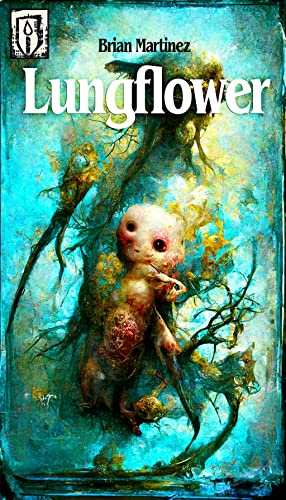
Indie creators have already begun to use AI-generated art in their comics. Several of those comics center their works around semi-dystopian commentary on AI itself: notably, Christen Bach in Entering the Data Core, Carson Grubaugh (with C.S. Lewis’ text) in The Abolition of Man, and The Singularity by Kris McDermott a.k.a. “The Maphatter”.
Numerous news articles discuss the novelty of a few creations and who got there first (the honor of first graphic novel with AI art might go to Lungflower by sci-fi author Brian Martinez, published in June 2022). Now that the dust has settled, another key question is: does AI art translate to good comics?
I read 19 comics with AI-generated artwork, all of which I downloaded or read for free online. In addition to the question of quality, I wanted to answer a few other questions: Do these comics share common characteristics? How about the creators? Are traditional comic creators getting something valuable from these tools? Here are some of the broad trends I observed:
AI Comics Creator Traits
The creators of AI comics generally fell into one or more of three categories:
- They had a story vision that had been sitting on the backburner and were inspired by AI art to make it a reality, or AI took their ideas in a new direction. These were typically indie writers and/or designers/filmmakers/other type of artists. This was the largest category. Several of them also noted that they did not have the resources to hire an artist, so AI was the reason they were able to tell the story at all.
- They were professional artists and writers already in comics, and used the tool to extend their capabilities.
- They found the AI medium fascinating (or in some cases, disturbing) and wanted to see what the “machine” was capable of. In some cases, they also AI-generated the story or visualized a story or poem in the public domain to play around with its potential.
AI Comics Genre & Style
Science fiction was by far the most popular genre of the AI comics I could find, with horror a strong second. Fantasy and surrealist stories also made a showing.

These genres seemed a reflection of AI’s capabilities, as futuristic images, surreal or fantastical scenery, and mutated beasts are all strengths of AI art generation. Given current capabilities, it’s hard to see AI succeeding at complex superhero battle scenes or quieter slice-of-life stories without help from traditional artistry.
Some comics developed by creators who combined AI art and story for experimentation’s sake took more avant-garde directions and read less like true stories.
Creators generally chose colorful painterly styles with varying levels of realism, with a few opting for subdued black and white ink, line art, or even a mixed media look. Midjourney was the favored tool for most. There were no “borrowed” comic artists’ styles I could detect, except for one reminiscent of Moebius that was called out as an homage in the description.
Other Traits of AI Comics
Current peculiarities to comics with AI art include:
- Inconsistent faces, bodies, props, and clothing (although grassroots communities and tutorials have sprung up where comic creators swap tips on major challenges like achieving character consistency, so this is already showing major signs of improvement from new creator techniques)
- Stories that focus on one character with very few group images, characters’ faces obscured by darkness, masks, or helmets, and what feels like too many zoomed-in faces or backs of heads
- Distorted hands with too many fingers (this is possibly the most famous AI art issue)
- Often, a visual emphasis on scenery and atmosphere over major characters, likely as a way to avoid anatomical and consistency weaknesses and showcase AI’s scenery strengths – although design consistency in environments, especially for complex designs, is also lacking
- Sometimes a “story” that is more of a philosophical musing through a surreal world without any major characters
- Faces, bodies, and objects that look distorted or with pieces missing, or that seem to blend into other things in the world
- “Artifacts” in scenery, like parts of a building that make no sense if you look closely

Comics creation with AI right now seems in part a process of creators accepting that their work will have certain peculiarities and trying to emphasize the areas where the art is strong.
Reading one of these comics can feel akin to watching The Imaginarium of Dr. Parnassus, in which Johnny Depp, Jude Law and Colin Farrell all stepped in to play Heath Ledger’s character after he passed away mid-filming. All of these images in the comic with different and/or distorted faces represent a single character and you just have to go with it.
The necessity of continuous and consistent visuals in comics emphasizes the current weaknesses of AI.
The strongest works were by creators who had the ability to edit the AI images to some extent, and had a strong grasp of style, layout, dialogue and lettering. Those creators were also often professional storytellers and/or designers already.
Note: New comics are appearing weekly in private communities like closed social media groups and artist mailing lists as well as publicly on small creator websites.
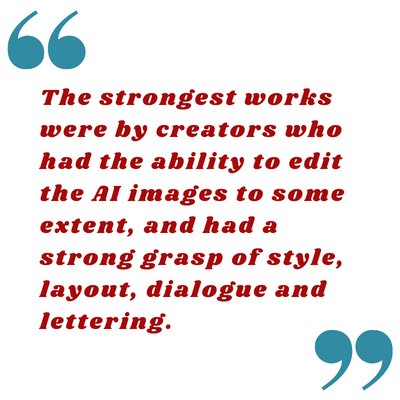
Insights from Creators
Here are a few interesting quotes from creators commenting on their process:
“I’ve got many different comic stories scribbled out on notes and when I started putting together the idea of creating a graphic novel with Midjourney, everything fell into place.”
[…]
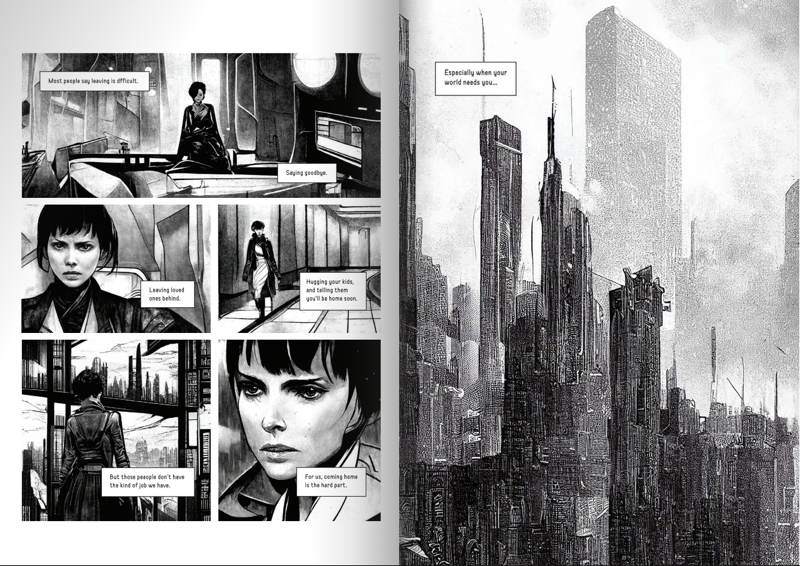
Using black and white pages helps me remove the realistic approach that many other artists are using, which makes it easier to keep my characters more loosely consistent. For this book, manga comics and Blade Runner are the basis for the look, and then I apply pen, pencil and ink wash styles to get a nice variety of backgrounds that don’t have to be filled with buildings, trees, etc. It’s more stylistic and illustrative.”
Then you repeat, repeat, repeat 20 more times until you have a handful of possible elements that can create one page. Those that say you just type some words and you’re done are wrong. I don’t consider myself an artist when I look at these pages. I simply say I’m a storyteller and this is my creation.”
– Randall Rozell, writer of Whitaker Knox and creator of AI comic Death’s Dream Kingdom
“There is a lot of focus on A.I. generated imagery these days, and with it a debate about its value to the arts. What is the merit of these tools? can it be categorized as original? Will it steal our jobs? Is it cheating? Is it copyright infringement? Is it art at all?”
A couple of weeks ago I decided to dip into the A.I. pool and do a little project softly inspired by @davidoreilly s musing on the subject – and @booker_makes ‘ beautiful A.I. comic ‘The terrible misfortunes of an intergalactic traveler’ – among plenty [sic] other things.”
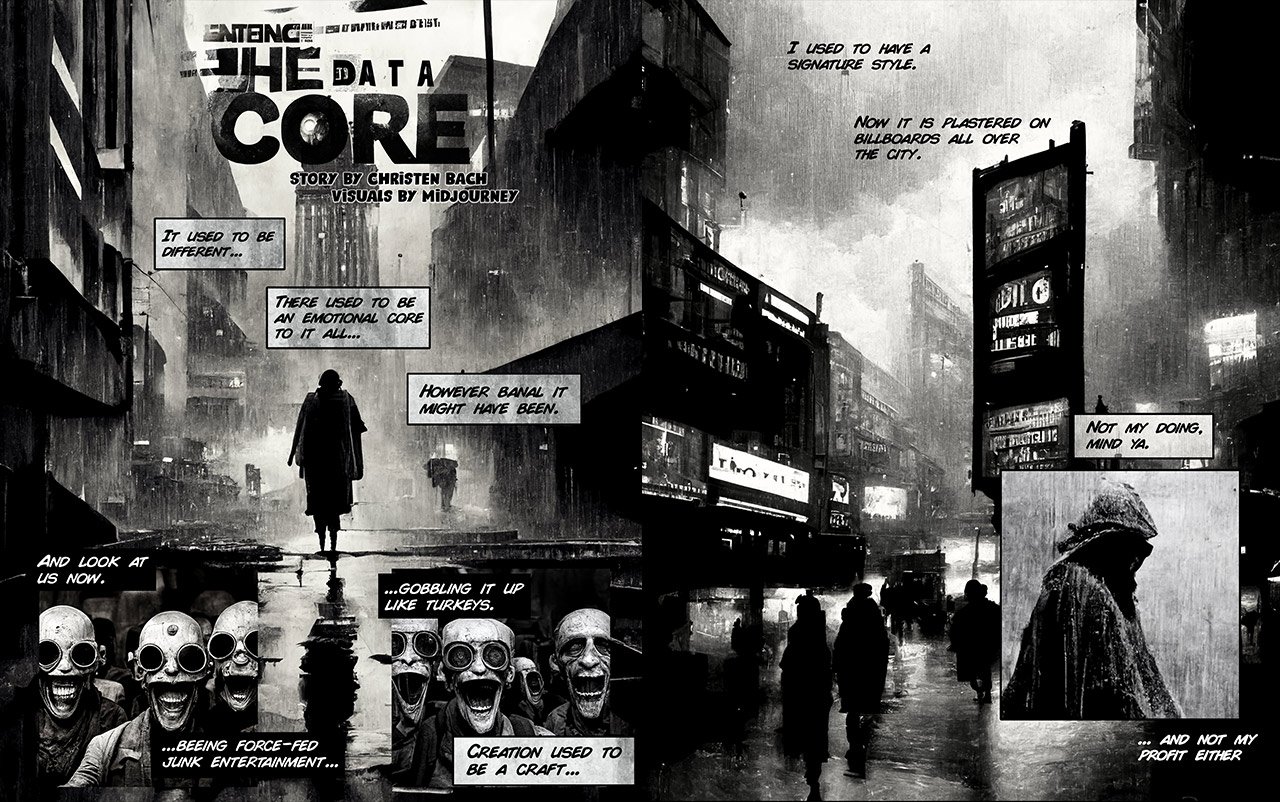
I find the entire Midjourney/Dall-e/Disco Diffusion generated imagery a super interesting tool for us as visual storytellers. I do not however believe the images has [sic] any merit on their own. There are a lot of nice pictures being generated, but it is not a skillful process: It is a chance generator you are curating more than anything else.”
I see it like this: These new tools have an immense power. They are super fast. They can tirelessly generate new variations on a theme. They are a collaborator that can excite and surprise you in the creative process (as well as frustrate you when you are out for something really specific). They can help loosen your mind from your normal creative patterns. BUT… it is not about the pictures being generated, it is about how we as artists or storytellers choose to use/curate/stage those pictures.”
I started out in comics years ago and have been thinking about getting back into it for a long time. I just haven’t had the time between being a parent and being totally swamped in animation- and VFX-work. As I started playing around with ‘the Tools’ it dawned on me how quick it would be to generate quite complex imagery and string it into a narrative – and decided to reignite my old love for the comic book format. The process comes with a cost though. You will have to view the A.I. as a collaborator. You can notch it in a direction, but you don’t have 100% control, so you need to keep a flexible mind. I generated hundreds of images for these 10 pages, and constantly had to compromise on the images and sequences I had locked in my mind while writing it. Still I was able to churn everything out in about 3 workdays (ca. 24 hours collected) from nothing to final result.”
– Christen Bach, Danish animation director and creator of AI comic Entering the Data Core
Numerous creators have likened comics creation with AI-generated art to improv. It’s challenging to achieve desirable and consistent results, but sometimes a cool result takes the story in an unexpected direction.
They typically noted that AI was a key contributor to their process somewhere on the cover or within the description. Common patterns in the credits included “art by Midjourney” or the creators calling themselves writer, imagineer, layout, storyteller, or art director.
Top 5 AI Comics Highlights
Here are my favorite stories from this medium so far and why they stood out:
- A Different Aftermath by T. Kingfisher This story published to Twitter could qualify as eco-fiction as well as sci-fi. Kingfisher is both a professional fiction writer and creator/artist of the webcomics Digger and other illustrated works and—perhaps unsurprisingly—I found her comic to be the most cohesive visually and narratively of all the ones I read. It’s a brief but moving and beautiful piece about an environmental dystopia that she notes she otherwise wouldn’t have had time to make. She also used the most hybrid art process of the comics I read, mostly with Midjourney but also a small amount of DALL-E, and she hand drew silhouetted characters.
- The Lesson by Steve Coulson Coulson is one of the most prolific creators in the AI space so far, with four sci-fi comics (and counting) known collectively as The Bestiary Chronicles. They are all freely downloadable. My favorite of the first three was The Lesson, which features humanity learning about their own dystopian world. Coulson seems to enjoy pioneering techniques for using AI—Midjourney in this case—sharing his tips and discoveries for comics as he goes on. He is a creative director for an ad agency (read: strong storyteller). His stories are set in a single universe of monsters and tech, and have a playfully retro art style with narrative drama and strong command of layouts and dialogue.
- Death’s Dream Kingdom by Randall Rozell Death’s Dream Kingdom is a short sci-fi comic that teases a larger universe of time distortions and alien threat. It stood out to me for its intriguing narrative and consistent character looks (rare in the medium). Rozell is a graphic and web designer as well as a comics writer who successfully Kickstarted his comic Whitaker Knox. According to his back of the book notes, he was compelled by the idea of making a Midjourney-centered comic and reworked some of the Midjourney art with Photoshop.
- Goats by Elvis Deane This horror comic, available for a free read online, features a female protagonist who has disturbing dreams that she finds difficult to shake and soon has more nightmarish waking experiences. The story delivers a strong sense of dread and a haunting narrative. Deane called his use of Midjourney “imagineering.” In the back of the book, he describes his previous efforts to make comics and improve his art, and that he was getting burnt out. He also noted that Goats, which evolved from playing with Midjourney, would not have happened without it.
- Novel Creatures by Leonardo Roma This short and experimental piece stretches the boundaries of both comics and authorship. Roma, a real-time 3D artist (as well as a co-founder of Art Ex Machina, an organization collecting AI sequential art into anthologies) used unspecified AI tools to prompt a story with excerpts from Italo Calvino’s If On a Winter’s Night A Traveler… then edited, laid out, and generated AI art to go along with the surreal, dream-like text. It is Roma’s skill at art directing—as he calls it—that makes this work shine. He chose a mixed-media look for his imagery, which feels like paper sculpture. Each image concept is carefully thought out to enhance the text: the results are gorgeous and thought-provoking.
The others on the list below are also worth a read: you could probably get through them all in an afternoon or two, with most being issue-length or even shorter.
The Full List I Read
Sci-Fi
- A Different Aftermath by T. Kingfisher
- Chronos: the Spacetime Machine by Timothy Parish
- Death’s Dream Kingdom by Randall Rozell
- Entering the Data Core by Christen Bach
- Exodus by Steve Coulson
- Stargazer by Adam Rodriguez
- The Lesson by Steve Coulson
- The Singularity by Kris McDermott a.k.a. “the Maphatter”
- The Terrible Misfortunes of an Intergalactic Traveler by Jordan Booker
- Zarya of the Dawn by Kristina Kashtanova
Horror
- Goats by Elvis Deane
- Lungflower by Brian Martinez
- Mask Temple at Seorak Mountain by Yongwook Seong
- The Last Journey by Melita Meklusakova
Fantasy
- AbsXess #1 by Chris English
- The Cell by John Osmett
Surrealist
- The Question by C.A. Salyer
Avant-Garde
- Abolition of Man by Carson Grubaugh (text by C.S. Lewis)
Novel Creatures by Leonardo Roma (with AI story prompts from Italo Calvino’s If On a Winter’s Night a Traveler…)
Associations Gathering AI Comics
A few organizations have begun to collect and jointly promote comics with AI-generated art:
- Art Ex Machina Art Ex Machina gathers and publishes quarterly collections of AI-generated sequential art: collaborations between writers, artists, and AI. Stories are free to read on their platform. Founded by Timothy Parish and Leonardo Roma, both creators of comics listed above.
- AI Comic Books Stories are also free to read on this platform dedicated to comics with AI art, with some overlap of creators. Founder Jeff Weiner announced he also plans to publish print runs for distribution in comic book stores, in partnership with an established comic book publisher.
Social media communities on channels like Facebook, YouTube and Discord have also gathered to share techniques and artwork.
Closing Thoughts
AI art is extending the capacity of some pros in this notoriously labor-intensive field, while bringing new creatives into the fold who would not otherwise have had the resources to execute their vision. It is also pushing some creators in different conceptual directions.
Editors at some traditional comics publishers—notably, BOOM! Studios, IDW, Z2, and Mad Cave Studios—have spoken out against AI art submissions. Jon Moisan, acquisition editor at BOOM! later updated a tweet to clarify that he was primarily concerned with artists attempting to pass off AI art as unassisted.
A Kickstarter in Italy for a graphic novel using AI to illustrate the Hans Christian Andersen tale “The Shadow” published by Inkdrop Studio met its goal a few months ago. The creators note that collage cutting and retouching of Midjourney images was necessary to achieve the desired quality. The creator Rozzell, whose book is mentioned above, launched a Kickstarter for an ongoing story of Death’s Dream Kingdom, also upfront about the use of Midjourney, which has also surpassed its modest goal. There seems to be an enthusiastic readership for these works, so we may see more creators taking this route in the future.
So does AI translate to good comics? Yes, if the creators have storytelling chops and strong visual sensibilities, but the art has notable limitations and quirks. For comics and other continuous art forms, AI art still requires a considerable amount of iterative work and an artistic eye to wrangle it into something that matches story intent. Ultimately, the quality of the comic still comes down to one’s human ability to tell a coherent, compelling narrative and understand the interplay between visuals and text.
Given the speed at which such comics are being created, this article is sure to go out of date quickly.


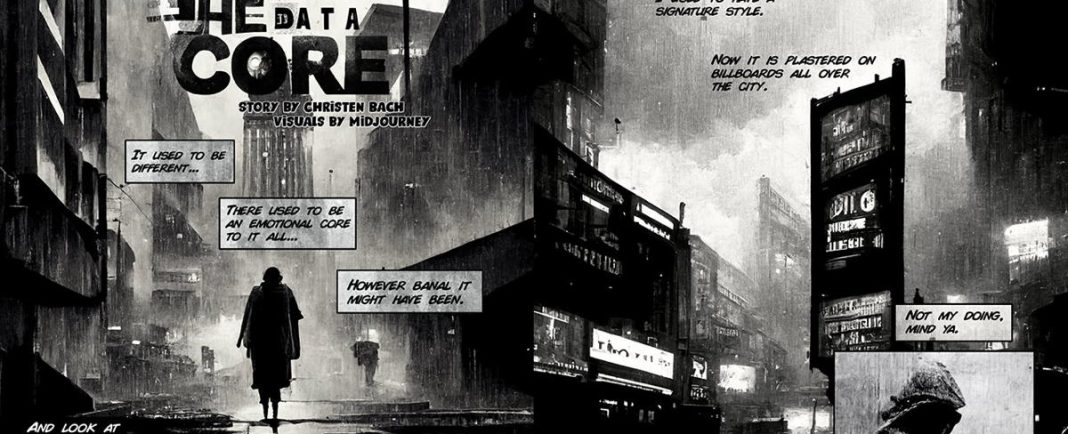
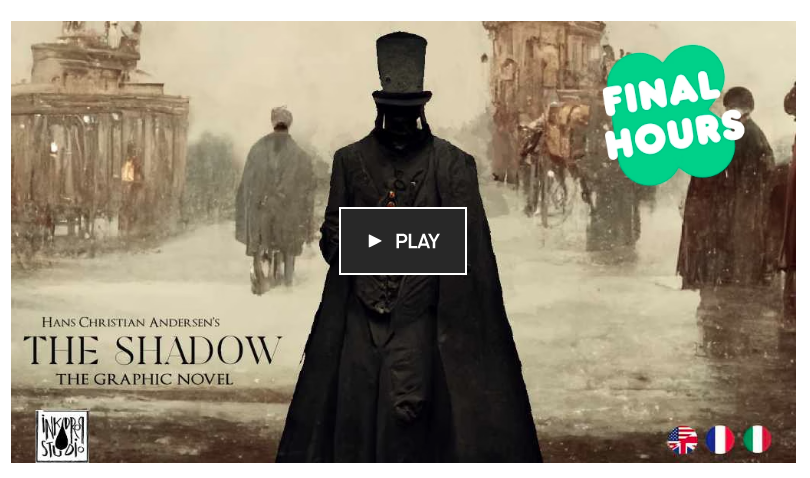
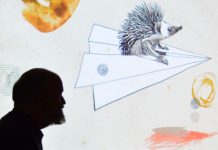


This was an excellent article. Well researched, informative and balanced. I look forward to following the many links you provided!
Comments are closed.